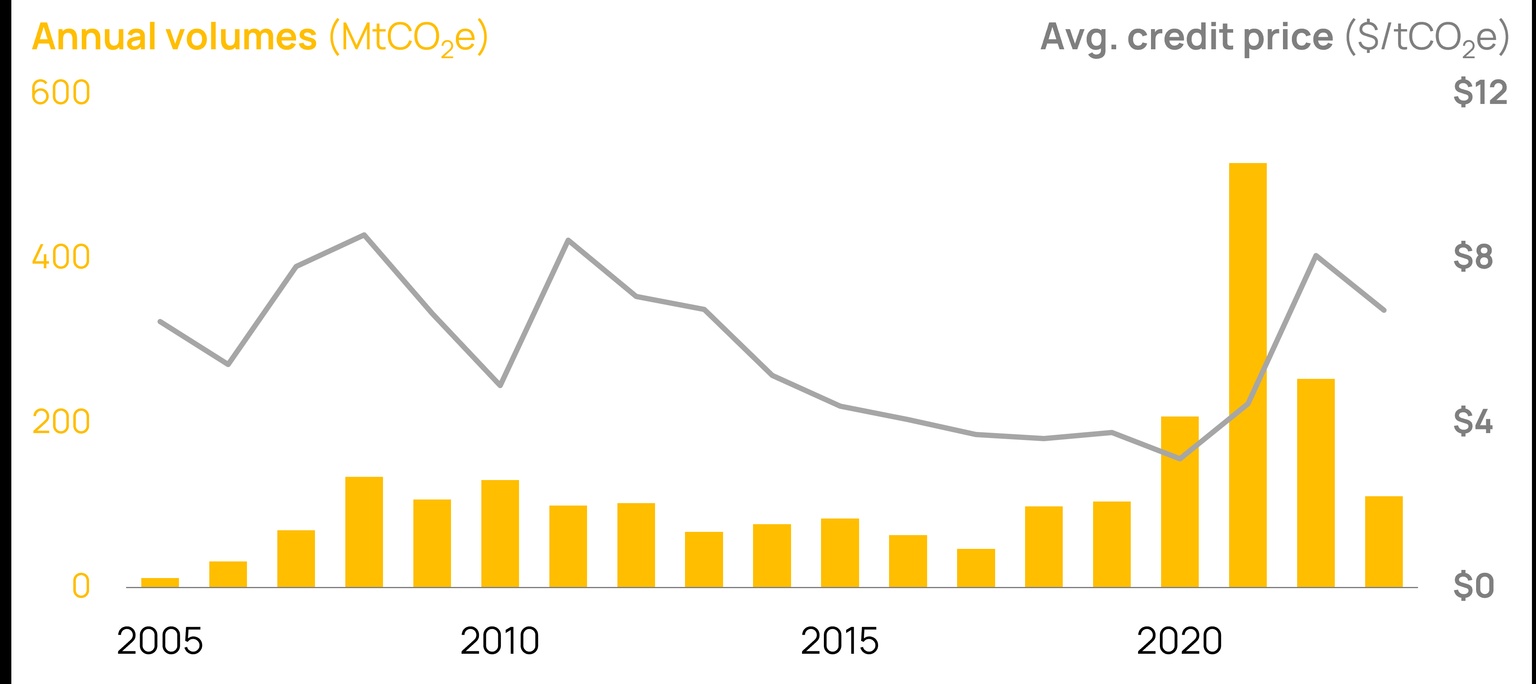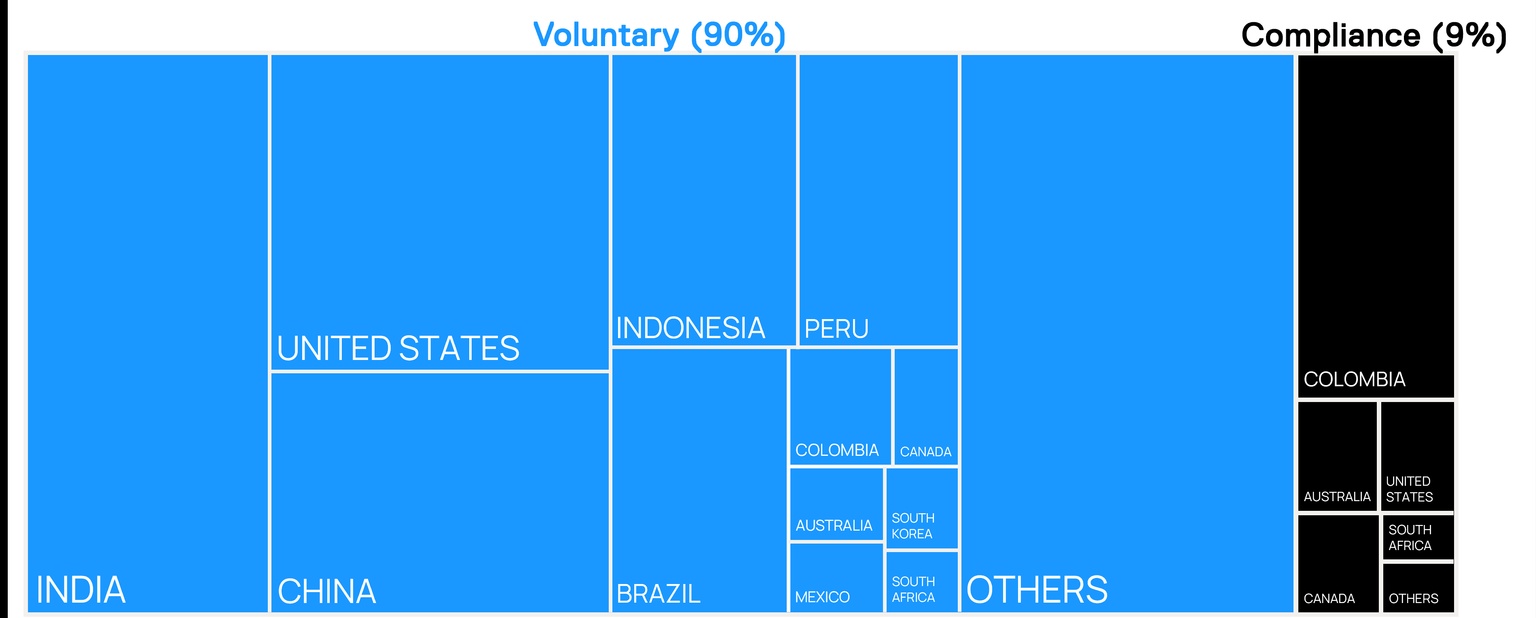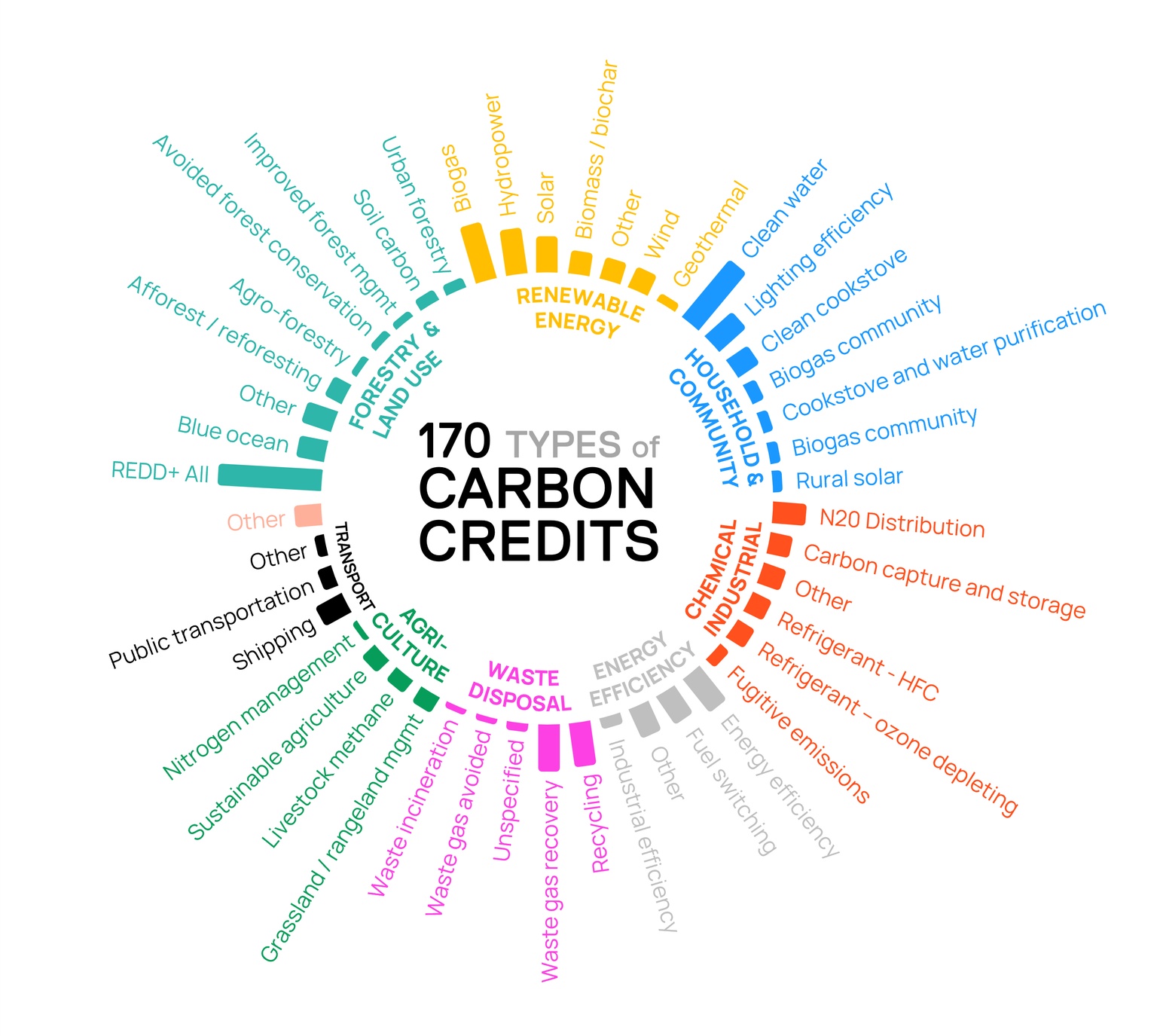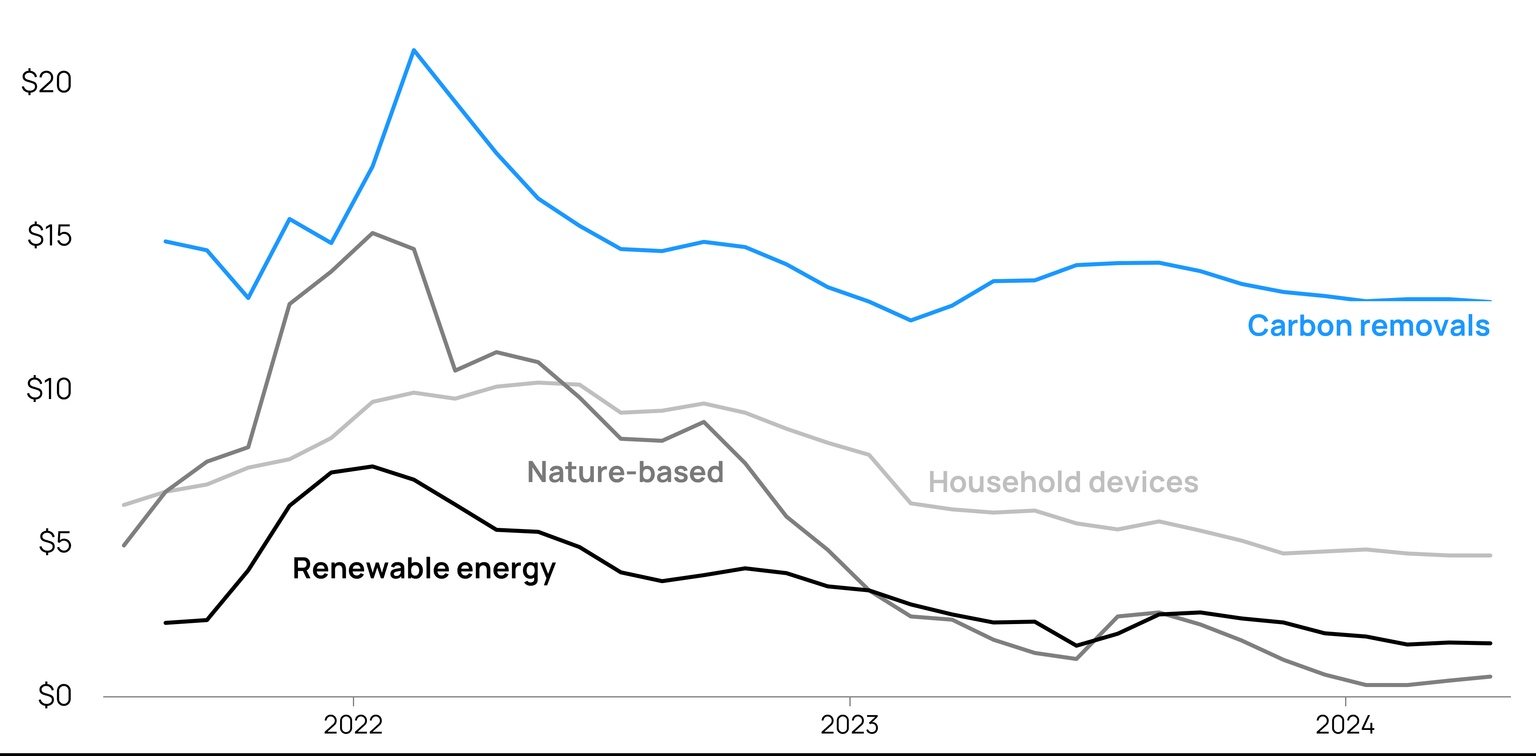
Aaron Foyer
Vice President, Research and Analytics
After breaking out in popularity in 2021, voluntary carbon markets (VCM) have been plagued by scandal and controversy.

Aaron Foyer
Vice President, Research and Analytics
When Nike released Air Force 1s in October 1982, they became overnight classics. First and foremost, they were performance basketball shoes. Boasting 30% better cushioned shock and 20% more resilient construction than a standard shoe at the time, some of the top ballers in the sport embraced the iconic sneaker for gametime. That included NBA superstar Moses Malone, who took the 76ers to their first title wearing Air Force 1s.
But the impact of AF1s went beyond sports: they were a cultural phenomenon. The New York streetball and hip-hop scenes quickly embraced the shoes, referring to them as “Uptowns”, because of their association with Harlem and urban fashion. Wearing them was a symbol of style and status. Maintaining their whiteness, a point of pride. Even emerging East Coast artists like Run-D.M.C. and Rakim wore AF1s and helped their prominence grow.
More than 40 years later, Air Force 1s are considered to be the most successful sneaker of all time and are still the most popular shoe on Earth.
The secret sauce: The “air” for the entire Nike Air series — Air Force 1s, Air Jordans, Air Maxs and others — came from an encapsulated gas-filled pocket placed inside each shoe’s sole designed to absorb the impact of basketball’s stop-and-go motion. The secret of the cushion was a large colorless, odorless gas known as sulfur hexafluoride, chosen because it is chemically inert and has a high molecular density. Sulfur Hexafluoride Jordans just didn’t have the same ring to it.

An original Air Force 1 shoe ad // Nike
What Nike didn’t appreciate at the time was that sulfur hexafluoride is the most powerful greenhouse gas on Earth — 24,300 times more potent than carbon dioxide. So little is needed to make an impact, Bloomberg estimates the Air Series lineup of Nike shoes alone was releasing emissions comparable to half the cars in the company’s home state of Oregon.
To avoid what Nike believed were incoming regulations against the use of sulfur hexafluoride, the American shoemaker spent years and tens of millions of dollars to find a replacement gas. You’ll be relieved to know the cushions inside Air Force 1s are now filled with nitrogen.
The controversy: To recoup some of its research and development costs, Nike was awarded 8 million carbon credits for “voluntarily” eliminating its use of sulfur hexafluoride. Voluntary credits are awarded for acting without coercion to reduce emissions, but there is little evidence to suggest Nike did this of its own accord. To the contrary, a series of internal Nike emails showed company officials were acting because of fear of future regulations, not for carbon avoidance.
Many of the Nike credits went unused and were mostly forgotten about, until they popped up in the buffer pool of the carbon creditor ACR earlier this year. Buffer pools in carbon markets are used as backup when other carbon credit projects fail, and so are generally believed to be high quality. With Nike’s offsets accounting for nearly one-fifth of all the buffer pool’s credits, it wasn’t just a bad look for Nike, it didn’t look great for voluntary carbon markets, either. Arguably, it was worse.
Losing faith: After breaking out in popularity in 2021, voluntary carbon markets (VCM) have been plagued by scandal and controversy. The total volume of credits traded on voluntary markets has since plummeted by nearly 80%, a sign of increased skepticism of their quality and trustworthiness.

Source: Ecosystem Marketplace
Yet, many companies are banking on projects from these markets to achieve their emission-reduction goals and VCMs seem to be one of the best mechanisms to fund clean energy projects in developing countries.
So, is there any hope of trust returning to VCMs to unlock clean energy projects across the world, or is it time to put the entire idea to bed?
Before jumping right into voluntary markets, it’s worth understanding how they’re different from compliance markets.
Compliance markets — which we covered in depth in a previous piece — are created by the government by setting legally binding carbon limits for emitters. They act to both force decarbonization and help fund investments in clean energy projects. Usually limited to a state, province or country, compliance credits stay within the bounds of the market.
VCMs are quite different. Global in nature and driven by self-imposed sustainability goals, they connect buyers with credit sellers from various project types across the world. A rural solar project in Kenya can still get paid for its initiative by selling offset credits to willing buyers via voluntary markets, despite the lack of a government-imposed compliance market.
VCMs for CDRs: On top of reducing global emissions, it’s believed the world will need to remove 10 gigatonnes of carbon dioxide from the atmosphere by 2050 to moderate climate change. VCMs will play a critical role in helping fund many of those carbon dioxide removal projects. Even today, there are 10x more voluntary credits being retired around the world than compliance credits.

Note: The outstanding 1% of credit retirements are from government, all Australia
Source: World Bank
The benefit of large global markets is market efficiency — buyers can identify the cheapest means to reduce or remove carbon emissions. Buyers in industries that are expensive to decarbonize can instead find low-cost alternatives to offset their emissions, like planting trees.
The Geneva-based International Union for Conservation of Nature believes nature-based offsets could contribute 30% of global carbon mitigation by 2030. Airlines, whose emissions are notoriously hard to abate, are expected to spend $600 million this year on carbon offsets, many of them from avoided deforestation projects.
If compliance markets are akin to a well-groomed corporate environment with established rules and procedures, voluntary markets are more like giant street bazaars with a vast range of projects, credit dealers and characters. Patrick Elliot, COO of bioenergy with carbon capture and storage (BECCS) developer Carbon Alpha, described the motley crew of early VCM project types in an interview with Orennia.
“The initial voluntary carbon market was like the Mos Eisley cantina from Star Wars, with a haphazard cast of credit categories that just seemed mismatched,” explained Elliot.
Under fire: As companies looked to voluntary markets to address their corporate emissions, skeptics started looking under the hood of some of their projects. What they found wasn’t pretty.
In January of last year, The Guardian released findings of an investigation into rainforest protection schemes overseen by Verra, one of the world’s largest carbon credit standards. The study claimed 90% of the credits reviewed could not reasonably profess genuine carbon reductions, so should be worthless. The rainforests in question showed almost no sign of the reduced deforestation that companies thought they were supporting by buying Verra’s credits.

Source: Orennia, adapted from a diagram by Ecosystem Marketplace
A few months later, a study published by Nature questioned the merits of offsets created from cookstove initiatives. Replacing carbon-intensive cookstoves used heavily in the developing world with more efficient cooking alternatives is a significant source of voluntary offset credits. The authors believed the climate benefits of cookstove offsets from 51 different projects were overstated by as much as 1,000%.
And there are more, including the protection of forests in Papau New Guinea with no evidence of imminent forest clearing, renewable projects in India that would have been built regardless of carbon offset support and, of course, Nike’s GHG Force 1s.
You can begin to see why the respondents to a recent survey by the International Emissions Trading Association (IETA) found the public perception and quality of carbon credits were the primary obstacles facing VCMs.
A credit house built on sand: Not helping concerns is the self-interest of the credit rating agencies. After The Guardian’s story of low-quality deforestation credits came out, Verra disputed the claims, saying the publication used broad assumptions and didn’t understand “project-specific factors.” ACR also came to the defense of Nike and its credits, applauding the shoe company for its voluntary actions to reduce emissions.
On the one hand, the opacity of the projects in question makes it difficult to figure out who’s right and who’s not. There’s only so much that can be gleaned from public data and, for news outlets like The Guardian, controversy sells. On the other hand, both Verra and ACR have financial and reputational motives to not put into question the quality and validity of credits they’ve put their stamp on.
The chatter storm that has taken over about the trust and quality of voluntary carbon credits has eroded the credibility and ultimately the price of most credit types. But not all credit types.
The World Bank tracks credit prices across different project types and while prices for most credit types have dropped considerably since the highs of 2022, one has persevered: carbon removals.

Source: World Bank
It’s not hard to see why credits are preferred from carbon removal technologies, like direct air capture, biochar and BECCS.
For one, the permanence of carbon storage is clearer with removals. Captured carbon dioxide sent 10,000 feet underground to mineralize carries a lot less risk of making its way back into the atmosphere than a forest that someone super-duper promises not to cut down and a fire could do away with anyhow.
It’s also clear that carbon removed from the air from a facility explicitly built for that purpose would not have been removed without the project credits. Renewable energy projects, being low-cost sources of electricity, may have been installed from market demand regardless of their access to voluntary credit markets. Academics call this “additionality.”
And carbon removals are measurable. A facility can accurately determine how much wood was converted into biochar instead of decomposing and how many tonnes of methane emissions have been avoided. Handing a family a more efficient stove carries no guarantees it gets used more than a couple of times — ask any parent who’s forked over for an Easy-Bake Oven.
While carbon removals are (rightfully?) getting attention from investors, trees do still absorb carbon. If there were verifiable ways to promote their growth, that’s real. And there are initiatives out there to improve the integrity of VCMs and their credits.
In July 2023, the Integrity Council for the Voluntary Carbon Market, a non-profit independent governance body for carbon markets, released its methodology to assess the quality of credits, known as the Core Carbon Principles. On the supply side, the Voluntary Carbon Markets Integrity Initiative developed the Claims Code for companies using credits to ensure their credibility. And there are more.
Bottom line: Most publications jumped on the Nike carbon credit story to sell newspapers highlight how untrustworthy voluntary credit markets are. What it actually highlights is the growing validation infrastructure that exists around VCMs, and that there are more eyes and systems scrutinizing credit projects so that the ones that survive are trustworthy.
That’s not to say all voluntary credit project types will make it out the other side, but hopefully VCMs have turned the corner.
Data-driven insights delivered to your inbox.